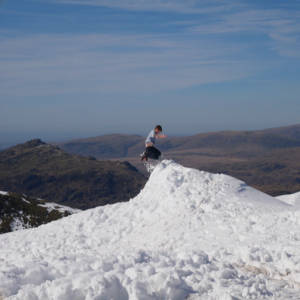Nether Bridge
A relief to see the river levels down this morning. There were some unlucky new homes on the edge of town that were flooded but this time Kendal wasn't as badly effected as Lancaster and Galgate.
I found this fascinating information about the bridge:
Kendal was an important trading centre in the 18th century. At that time, some 300 horse loads a week passed through the town, many of which would have crossed Nether Bridge, an ancient structure that carries the road from Kendal to Kirkby Lonsdale.
Now a Scheduled Ancient Monument, Nether Bridge spans a total distance of 42m. One of three masonry arch bridges over the River Kent at Kendal, it is situated where the level of the river is maintained by a series of low weirs, the largest weir being just downstream of Stramongate Bridge.
On each of its three arches, Nether Bridge has single rings of voussoirs on edge, solid parapets, and large cutwaters, pointed upstream and downstream, faced with fairly small irregularly shaped stones. The width between the parapet walls is 9m, and each arch is reinforced with a wrought iron tie bar near the crown of the voussoirs.The bridge is faced with irregular rough stonework.
The bridge cutwaters are carried up to parapet level as triangular engaged pillars, but the bridge has two trapezoidal-shaped pedestrian refuges with low rough stone seats either side of the deck. The copings of the parapets are dressed and secured one to another with iron clamps set in lead.
The bridge has undergone some modification since its 17th century construction. Originally intended as a packhorse bridge, its width was less than 4m, which would have been insufficient for the increased traffic flow through Kendal from the mid 1700s — the first stagecoach to Kendal (known as the 'Flying Machine' due to its team of six horses) ran from London in 1763.
To accommodate rises in traffic, the bridge has been widened twice, and three stages of construction can be seen clearly under the central arch. The first widening took place in 1772, on the downstream side when the turnpike road was built. This work was destroyed by flood only a few weeks after completion, and the bridge was subsequently widened on the upstream face instead.
The second widening — again on the upstream side — took place in 1908. This can be seen clearly from the regular ashlar blocks used in the soffites of the arches facing the present upstream side of the bridge. In the modern-day Kendal one-way system, Nether Bridge now carries westbound traffic only.
The bridge sits adjacent to the location of a former ford.
Research: PD and AJD
bibliography
"The Ancient Bridges of the North of England" by E. Jervoise
EP Publishing Limited, 1973

Comments
Sign in or get an account to comment.


